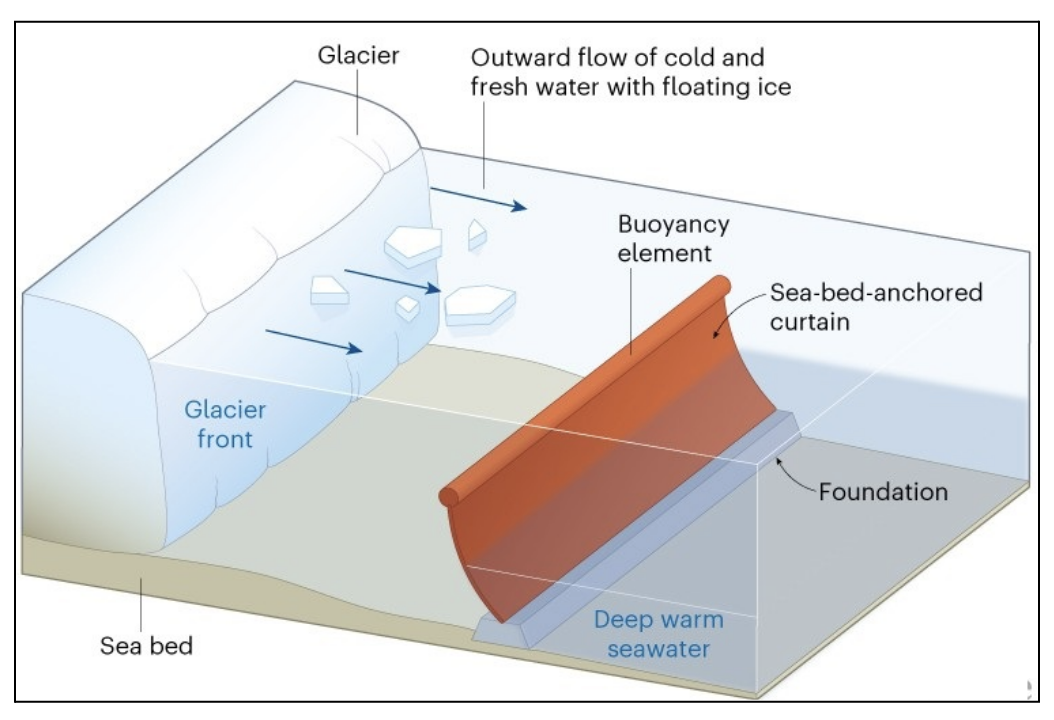GS Paper III
News Excerpt:
Scientists are exploring two primary methods which include fiber-based ‘curtains’ around ice shelves and drilling holes through glacier beds to slow sea level rise due to climate change.

Fiber Curtains and Glacier Bed Drilling
- Fiber curtains aim to prevent the collapse of glaciers by reducing the exposure of ice shelves to warm ocean water.
- These curtains, anchored to the seabed, could significantly slow sea-level rise by reducing melting rates.
- Drilling holes through glacier beds seeks to manage meltwater flow and artificially freeze glacier beds to decelerate ice loss.
- These interventions aim to prevent human-induced ice sheet breakdown and slow sea-level rise.
- The IPCC's AR6 estimates global sea levels could rise 0.43 to 0.84 meters by 2100.
Workshops and Discussions
- Workshops held at the University of Chicago and Stanford University in late 2023 evaluated the risks and benefits of these interventions.
- Experts assessed the current knowledge and debated whether engineering efforts in Antarctica and Greenland could effectively slow sea-level rise
Geoengineering and Criticisms
- These interventions are part of geoengineering, which involves deliberate, large-scale manipulation of the Earth’s climate system.
- Historically, geoengineering has faced criticism for governance challenges and potential risks, with calls for international agreements to restrict certain technologies like solar geoengineering.
- Solar geoengineering involves approaches to cool the Earth by reflecting solar radiation back to space. A popular example of this technology is the spraying of aerosols in the stratosphere to block incoming sunlight.
- Potential risks include the unintended consequences of installing curtains, such as destabilizing nearby ice shelves or affecting local ecology.
-
- The inclusion of voices from Arctic communities, including Indigenous peoples, is essential.
- The paper emphasizes limited understanding of large-scale glacial interventions and their scientific and economic impact.
- Experts have noted that it may take 15-30 years to fully evaluate these interventions.
- Immediate action on reducing carbon emissions remains paramount.
Additional Proposed Interventions
- Other discussed interventions include using windbreaks to increase snow deposition, cables and anchors to delay ice shelf breakup, and reflective materials to reduce ice breaks.
- These varied approaches highlight the need for comprehensive research and careful consideration of environmental and social impacts.
The effectiveness and risks of such geoengineering interventions remain uncertain, emphasizing the need for further research and immediate carbon emission reductions to address climate change.


